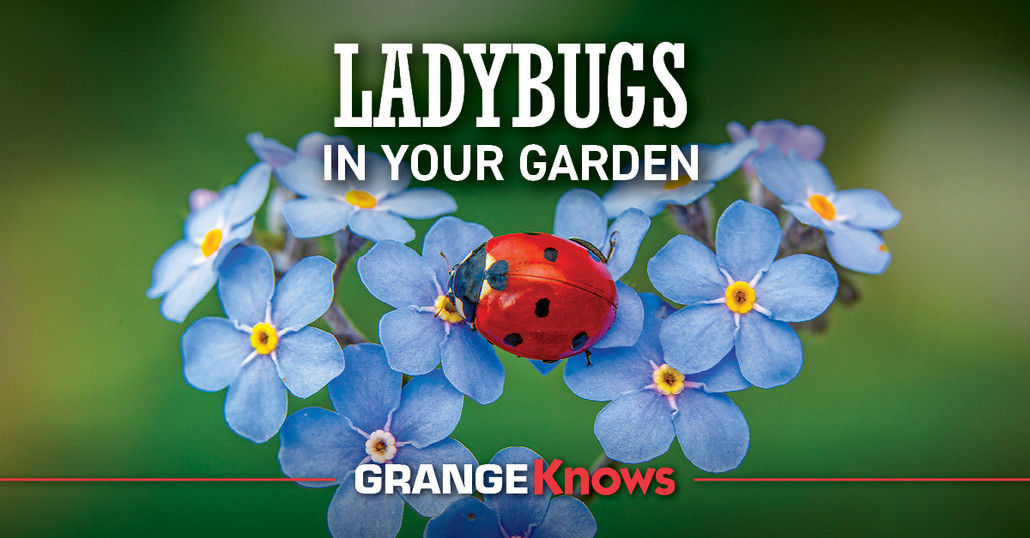
Ladybugs In Your Garden
Posted by Grange Co-op on 27th Feb 2024
Ladybugs (Hippodamia Convergens)
Did you know a single ladybug can consume up to 5,000 aphids in its lifetime? They are a great natural pest control without the need for harmful pesticides. They are not just charming little beetles, but also serve a great purpose!
Bringing Your Ladybugs Home
After bringing your ladybugs home, leave the packaging sealed and place it in a refrigerator door, or other cool place. This calms the ladybugs down and will keep them alive longer. They may appear almost dead in the refrigerator, but quickly become active when warmed up. Usually, they can be stored in the refrigerator for about 2-3 months, some losses can be expected the longer they are stored.
Caring for and placing Ladybugs in Your Garden
It is best to release your ladybugs in the early evening after you have watered your plants. They will be less likely to fly away compared to if you were to release them during the day. This gives your new ladybugs all night to settle in, find food and water, and decide they have found a good home, your garden! As your ladybugs wander your garden, they will find most of their moisture needs from aphids and other plant pests. Planting flowers that attract ladybugs, such as marigolds, calendula, and dandelions may help them stay longer as well.
In order for ladybugs to mature and lay eggs, they need nectar and pollen sources. This is normally supplied by the wide range of plants outside. If desired, you can substitute artificial food if there is not a decent range of pollen sources for them. Simply dilute a small amount of brewer's yeast, or bee pollen. Place tiny amounts of this mixture on small pieces of waxed paper and fasten them near plants. Replace it every 5-6 days, or sooner if you see it starts to mold. Keep any extra food refrigerated.
Benefits of Ladybugs
Ladybugs like having large pest populations to eat, which helps stimulate them to mate and lay eggs. The ladybugs will enjoy munching on insects such as scale insects, mealybugs, and mites to name a few. When food is harder to find, adult ladybugs may fly off, but the eggs hatch and provide further control. Both the adults and larvae feed on insect pests. Remember to avoid using chemicals that could harm them while they are in your garden.
You cannot have too many ladybugs! For home use, 1000 is usually enough for one application in a small greenhouse or garden. You may have to release a couple batches of ladybugs; they take time to be effective.
Ladybug Larvae
What do ladybug eggs and larvae look like? Their eggs look like clusters of little orange footballs each laid on edge. After hatching, they will look like tiny black "alligators", with orange spots. Extremely fast moving, they grow to 1/2" long over 2-3 weeks, then they pupate, usually on the top of the leaf, into another adult ladybug. One larva will eat about 400 medium-size aphids during its development to the pupa stage.
Ladybugs in Your Garden
By understanding and supporting these beneficial bugs, you can enjoy healthier plants, a balanced ecosystem, and the simple pleasure of witnessing nature's wonders right in your backyard. Grange Co-op is here to answer any questions you may have about ladybugs in your garden. Stop by your local Grange Co-op retail location or find a location near you on our website!
